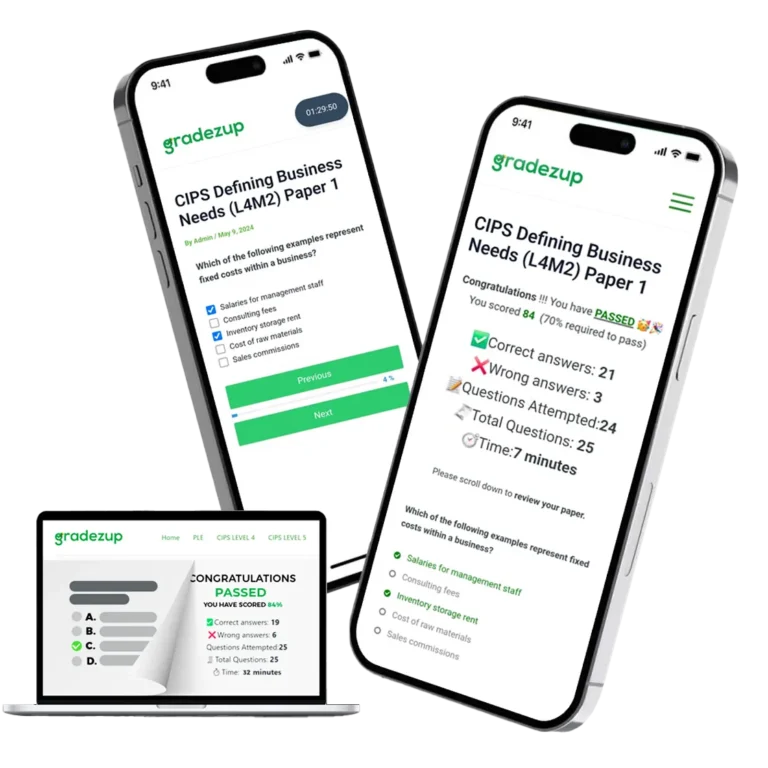
Ready to excel in your CIPS L4M2 Exams

Time's up

Time is Up!
🔻 Access more CIPS L4M2 Exam Past Papers 🔻
✨ Premium Access ✨
Note: $4.99 grants you access to all papers (paper 1 – paper 10)
Gain access using
Fix access error
Are you having trouble accessing papers after purchase. No worries just submit you account email to reboot the access instantly.

L4M2 Quick Exam-Ready Summary:
- Core Module
- Objective / Response Exam
- 1.5 hours Exam duration
- 60 Questions in exam
- 6 Credits Score
Business Case
Purchases, costs, benefits, cash flow, budgets, sectors.
Market Management
Info sources, cost types, TCO, benchmarking, Porter’s Forces.
Specifications
Spec types, ISO, risks, standardisation, value tools, stakeholders.
CIPS L4M2 Exam Focus Areas – 2025
“These are core learning areas, but CIPS may include questions from other parts of the syllabus.” ⚠️
1. Developing a Business Case for Procurement
- Types of purchase: straight re-buy, modified re-buy, new purchase (when each is used).
- Cost & benefit analysis: payback period.
- Cash flow: positive and negative flows.
- Budgeting: interpreting budgets, identifying budget variance.
- Economic sectors: manufacturing, construction, agriculture, financial.
Align business case with organizational strategy, benefits, risks, and options.
2. Market Management in Procurement and Supply
- Sources of information: primary and secondary.
- Cost analysis: direct vs. indirect costs, fixed vs. variable costs.
- Total cost of ownership (TCO).
- Benchmarking: different types and applications.
- Porter’s Five Forces: especially buyer’s and supplier’s bargaining power.
Use market intelligence to understand industry dynamics and inform sourcing.
3. The Use of Specifications in Procurement and Supply
- Specification types: conformance vs. performance specification.
- Standards: Common ISO standards.
- Risks: over-specification vs. under-specification.
- Standardisation: role in reducing costs and improving efficiency.
- Value analysis vs. value engineering: similarities and differences.
- Stakeholders’ roles in developing and managing specifications.
Through-life specification management: balancing short- and long-term needs. CIPS Official
View more CIPS Exams
Select the Exams you want to practice

